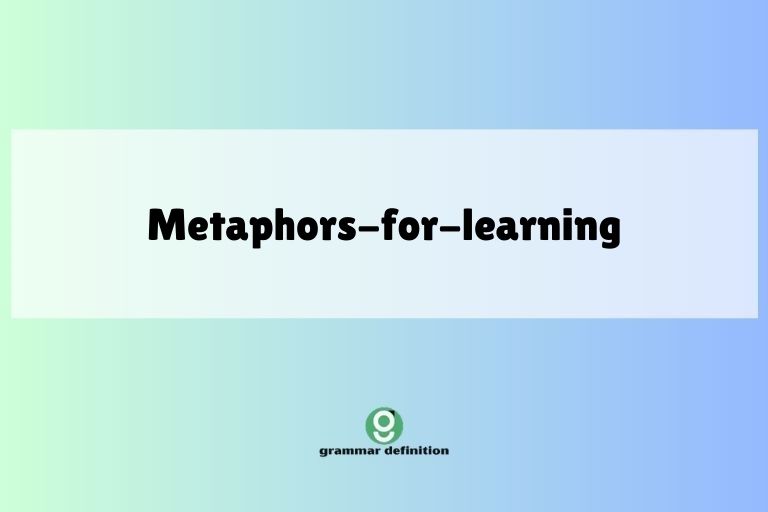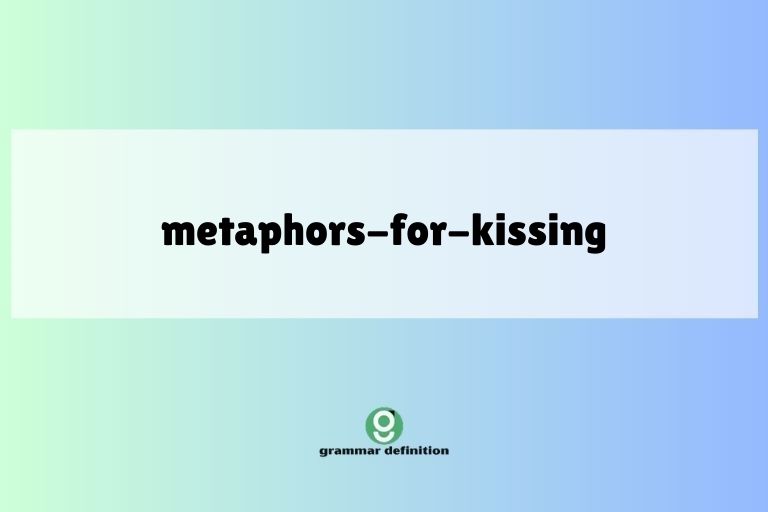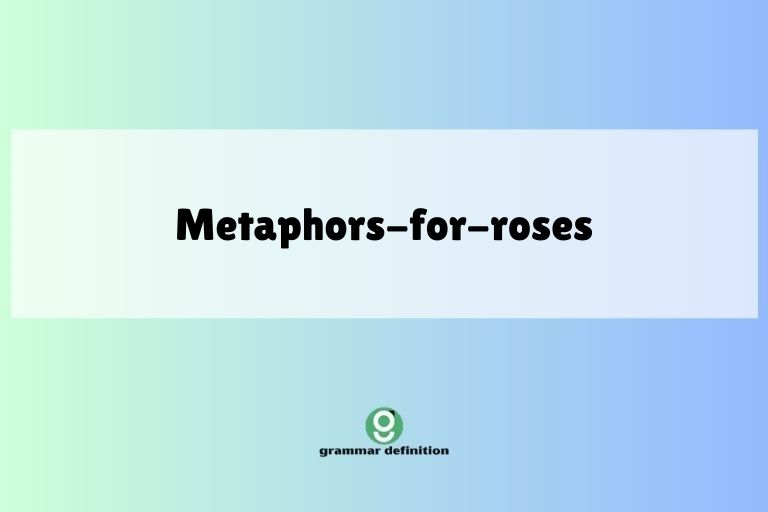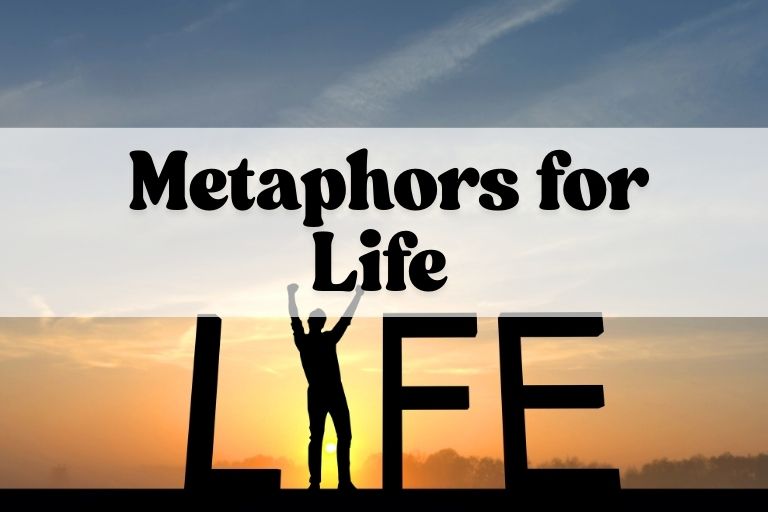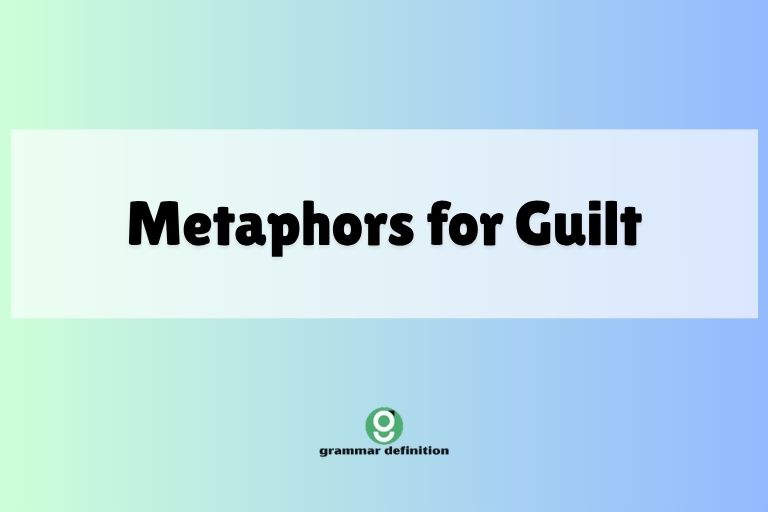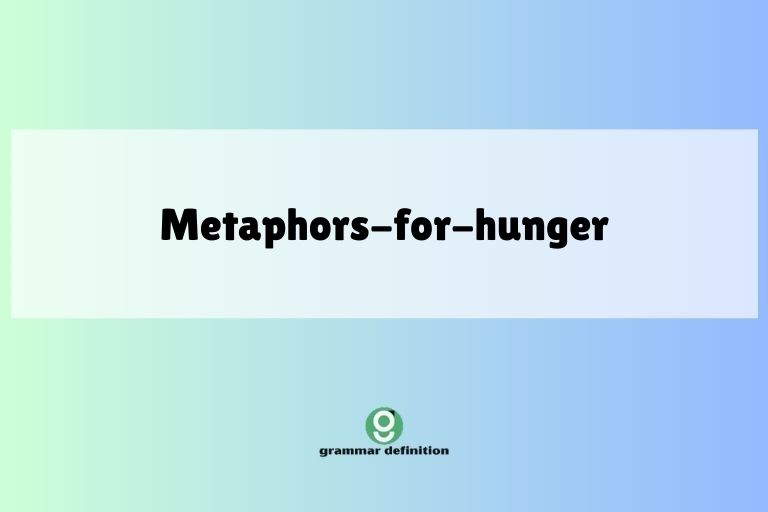Metaphors for Motivation: Fueling Your Drive with Figurative Language

Metaphors are powerful tools that transcend mere literary devices; they can profoundly impact our understanding and perception of concepts, particularly motivation. By framing abstract ideas like ambition, perseverance, and drive in relatable, tangible terms, metaphors can ignite our inner fire and propel us toward our goals.
This article explores the role of metaphors in shaping our motivational landscape, providing a comprehensive guide to understanding, identifying, and utilizing these figurative expressions to enhance personal and professional development. Whether you’re a student seeking academic success, a professional aiming for career advancement, or simply someone looking to cultivate a more motivated mindset, this guide will equip you with the knowledge and tools to harness the power of motivational metaphors.
Table of Contents
- Introduction
- Definition of Metaphor
- Structural Breakdown of Motivational Metaphors
- Types of Motivational Metaphors
- Examples of Motivational Metaphors
- Usage Rules for Motivational Metaphors
- Common Mistakes with Motivational Metaphors
- Practice Exercises
- Advanced Topics in Motivational Metaphors
- Frequently Asked Questions
- Conclusion
Definition of Metaphor
A metaphor is a figure of speech that directly compares two unrelated things, asserting that one is the other, or has qualities of the other, without using “like” or “as.” Unlike similes, which make explicit comparisons, metaphors create an implicit connection, inviting the audience to understand the target concept in terms of the source concept. In the context of motivation, metaphors help us visualize and internalize abstract ideas such as goals, challenges, and perseverance by relating them to more concrete and relatable experiences.
Classification of Metaphors
Metaphors can be classified in several ways, including:
- Standard Metaphors: These are common and widely understood metaphors, such as “time is money.”
- Novel Metaphors: These are original and creative metaphors that offer a fresh perspective.
- Dead Metaphors: These are metaphors that have become so commonplace that they are no longer recognized as figurative, such as “the leg of a table.”
- Conceptual Metaphors: These are underlying cognitive structures that shape our understanding of abstract concepts, such as “argument is war.”
Function of Metaphors in Motivation
Metaphors serve several crucial functions in the realm of motivation:
- Enhancing Understanding: They simplify complex ideas by relating them to familiar concepts.
- Creating Emotional Connection: They evoke feelings and associations that resonate with the audience.
- Inspiring Action: They paint vivid pictures of success and encourage perseverance.
- Reframing Challenges: They offer alternative perspectives on obstacles, making them seem less daunting.
Contexts of Motivational Metaphors
Motivational metaphors are used in a variety of contexts, including:
- Personal Development: Self-help books, motivational speeches, and personal coaching often employ metaphors to inspire individuals to achieve their goals.
- Business and Leadership: Corporate training programs and leadership seminars utilize metaphors to foster teamwork, innovation, and resilience.
- Education: Teachers and educators use metaphors to explain complex concepts and motivate students to learn.
- Sports: Coaches and athletes use metaphors to build confidence, encourage perseverance, and visualize success.
Structural Breakdown of Motivational Metaphors
Understanding the structure of a metaphor helps in analyzing its effectiveness and crafting compelling motivational messages. The key components of a metaphor are the source domain, the target domain, and the mapping between them.
Source Domain
The source domain is the concrete, familiar concept that is used to explain the abstract target domain. It provides the imagery and associations that make the metaphor relatable. For example, in the metaphor “life is a journey,” the source domain is “journey.”
Target Domain
The target domain is the abstract concept that is being explained or understood through the metaphor. In the metaphor “life is a journey,” the target domain is “life.”
Mapping
Mapping refers to the connections and correspondences between the source and target domains. It’s the process of transferring attributes and characteristics from the source domain to the target domain. In the “life is a journey” metaphor, the mapping might include:
- Challenges in life are like obstacles on a journey.
- Goals in life are like destinations on a journey.
- Progress in life is like traveling further on a journey.
Types of Motivational Metaphors
Motivational metaphors can be categorized based on the common themes and concepts they draw upon. Here are some prevalent types:
Journey Metaphors
Journey metaphors frame life, careers, or projects as a journey, emphasizing progress, obstacles, and destinations. They highlight the importance of perseverance and the rewards of reaching one’s goals. The journey metaphor is powerful because it is universally understood; everyone has experience with travel and overcoming obstacles to reach a destination. This relatability makes it easier for individuals to connect with the message and apply it to their own lives.
War Metaphors
War metaphors portray challenges and obstacles as battles to be won. They emphasize the need for strategy, courage, and determination. These metaphors are often used to instill a fighting spirit and encourage individuals to confront challenges head-on. War metaphors can be particularly effective in competitive environments or when facing significant adversity, as they evoke a sense of urgency and the need to overcome the opposition.
Light and Darkness Metaphors
Light and darkness metaphors associate success, knowledge, and hope with light, while failure, ignorance, and despair are linked to darkness. These metaphors tap into primal associations and can evoke strong emotional responses. Light metaphors are often used to inspire hope and illuminate the path forward, while darkness metaphors serve as warnings against complacency and the dangers of losing sight of one’s goals. This dichotomy is easily understood, providing a clear and impactful message.
Building Metaphors
Building metaphors compare achievements and progress to the construction of a building, emphasizing the importance of a strong foundation, careful planning, and consistent effort. They highlight the idea that success is built step-by-step, and that each component is crucial to the overall structure. These metaphors are often used to encourage patience and perseverance, as well as to emphasize the importance of attention to detail.
Sports Metaphors
Sports metaphors draw parallels between athletic performance and other areas of life, emphasizing teamwork, discipline, and the pursuit of excellence. They can be used to inspire a competitive spirit, encourage collaboration, and highlight the importance of practice and preparation. Sports metaphors are effective because they are relatable to a wide audience and evoke feelings of excitement, determination, and the desire to achieve victory. These metaphors can resonate deeply, especially with those who have experience in team environments.
Examples of Motivational Metaphors
Here are several examples of motivational metaphors, categorized by type.
Journey Metaphor Examples
The following table provides examples of journey metaphors and how they relate to motivation. Each example illustrates how framing a situation as a journey can inspire perseverance and a focus on the end goal.
| Metaphor | Explanation |
|---|---|
| “Life is a marathon, not a sprint.” | Emphasizes the importance of endurance and pacing oneself for long-term success. |
| “The road to success is paved with hard work.” | Highlights that achieving goals requires consistent effort and dedication. |
| “We’re navigating uncharted waters.” | Indicates a challenging and uncertain situation that requires exploration and adaptability. |
| “This project is a long and winding road.” | Suggests that the project will have many twists and turns, requiring patience and flexibility. |
| “He’s climbing the corporate ladder.” | Describes career advancement as a gradual and challenging ascent. |
| “She’s on a journey of self-discovery.” | Implies a process of exploration and growth to understand oneself better. |
| “Our path to success is fraught with obstacles.” | Highlights the challenges and difficulties that must be overcome to achieve success. |
| “The voyage to our dreams requires courage.” | Emphasizes the bravery needed to pursue one’s aspirations. |
| “We must stay the course.” | Urges persistence and commitment to the chosen path. |
| “Every step forward is a victory.” | Highlights the importance of celebrating small achievements along the way. |
| “The summit of our career is within reach.” | Suggests that the ultimate goal is attainable with continued effort. |
| “Our journey together has just begun.” | Indicates the start of a long-term collaboration. |
| “Don’t get lost along the way.” | Warns against distractions and losing sight of one’s goals. |
| “The path is clear; let’s move forward.” | Encourages decisive action and progress. |
| “We’re charting a new course for the company.” | Indicates a strategic shift and new direction. |
| “This is a pivotal crossroads in our journey.” | Highlights a critical decision point. |
| “The journey is as important as the destination.” | Emphasizes the value of the learning and experiences gained along the way. |
| “We’re paving the way for future generations.” | Suggests that current efforts will benefit those who come after. |
| “The road ahead may be bumpy, but we’ll get there.” | Acknowledges challenges while maintaining optimism. |
| “Each challenge is a stepping stone to success.” | Reframes difficulties as opportunities for growth. |
War Metaphor Examples
The following table illustrates how war metaphors can be used to instill a sense of determination and resilience. By framing challenges as battles, individuals are encouraged to fight for their goals with courage and strategic thinking.
| Metaphor | Explanation |
|---|---|
| “We’re fighting an uphill battle.” | Suggests a difficult and challenging struggle. |
| “She’s a warrior in the boardroom.” | Describes someone who is assertive and competitive in a business setting. |
| “We must defend our position in the market.” | Emphasizes the need to protect one’s market share from competitors. |
| “He’s leading the charge against inefficiency.” | Indicates a proactive effort to eliminate waste and improve productivity. |
| “We’re launching an offensive marketing campaign.” | Describes an aggressive strategy to gain market share. |
| “The battle for customer loyalty is ongoing.” | Highlights the continuous effort needed to retain customers. |
| “We must fortify our defenses against cyber threats.” | Emphasizes the need to protect against online attacks. |
| “He’s a strategic mastermind on the battlefield of business.” | Portrays someone with exceptional strategic skills in a competitive business environment. |
| “We’re waging a war on poverty.” | Indicates a comprehensive effort to eliminate poverty. |
| “Every day is a new battle.” | Highlights the constant challenges and struggles one faces. |
| “We must conquer our fears.” | Emphasizes the need to overcome one’s anxieties and insecurities. |
| “She’s a formidable opponent.” | Describes someone who is strong and difficult to defeat. |
| “We’re in the trenches, working hard to succeed.” | Highlights the intense effort and dedication required. |
| “We need to mobilize our resources.” | Emphasizes the need to gather and utilize all available assets. |
| “The enemy is complacency.” | Identifies a lack of motivation as the main obstacle. |
| “We must fight for what we believe in.” | Encourages standing up for one’s principles. |
| “He’s a seasoned veteran in the industry.” | Describes someone with extensive experience and expertise. |
| “We’re under attack from negative feedback.” | Highlights the challenge of dealing with criticism. |
| “We must strategize our next move.” | Emphasizes the need for careful planning. |
| “The war is not over until we win.” | Reinforces the importance of perseverance. |
Light and Darkness Metaphor Examples
The following examples show how light and darkness metaphors can be used to inspire hope and clarify understanding. Light symbolizes knowledge and positivity, while darkness represents ignorance and negativity.
| Metaphor | Explanation |
|---|---|
| “Her ideas illuminated the path forward.” | Indicates that her insights provided clarity and direction. |
| “He’s a beacon of hope in a dark time.” | Describes someone who provides inspiration and optimism during difficult circumstances. |
| “We need to shed light on this issue.” | Emphasizes the need to investigate and understand a problem. |
| “Don’t let negativity cast a shadow on your dreams.” | Warns against allowing pessimism to undermine one’s aspirations. |
| “The truth will come to light.” | Expresses confidence that the truth will eventually be revealed. |
| “His future is bright.” | Suggests that he has a promising and successful future ahead. |
| “We’re emerging from the darkness into the light.” | Indicates a transition from a difficult period to a more positive one. |
| “She’s a shining star in the company.” | Describes someone who is exceptionally talented and successful. |
| “Ignorance is darkness.” | Highlights the negative consequences of a lack of knowledge. |
| “We found a glimmer of hope.” | Indicates a small but significant sign of optimism. |
| “The project was shrouded in secrecy.” | Suggests that the project was intentionally kept hidden. |
| “Let’s illuminate the possibilities.” | Encourages exploring and highlighting potential opportunities. |
| “His words cast a dark cloud over the meeting.” | Indicates that his comments created a negative atmosphere. |
| “We need to bring this issue into the light.” | Emphasizes the need to openly discuss a problem. |
| “She’s a guiding light for her team.” | Describes someone who provides leadership and direction. |
| “The future looks bleak.” | Suggests a pessimistic outlook for the future. |
| “We need to shine a light on corruption.” | Emphasizes the need to expose and address corrupt practices. |
| “Her smile is a ray of sunshine.” | Describes her smile as warm and uplifting. |
| “We’re walking in the shadows of doubt.” | Indicates a lack of confidence and uncertainty. |
| “Knowledge is the light that guides us.” | Highlights the importance of learning and understanding. |
Building Metaphor Examples
The following table shows how building metaphors can be used to emphasize the importance of planning, effort, and a strong foundation in achieving goals.
| Metaphor | Explanation |
|---|---|
| “We’re building a strong foundation for the future.” | Emphasizes the importance of establishing a solid base for long-term success. |
| “He’s constructing a successful career.” | Describes the process of building a career through hard work and dedication. |
| “We need to lay the groundwork for this project.” | Highlights the importance of preparing the necessary conditions for success. |
| “Don’t let your dreams crumble.” | Warns against allowing one’s aspirations to fall apart. |
| “She’s the architect of her own success.” | Describes someone who is responsible for planning and achieving their own goals. |
| “We’re erecting a new headquarters.” | Indicates the construction of a new and important facility. |
| “The company is a well-oiled machine.” | Suggests that the company operates efficiently and smoothly. |
| “We need to reinforce our infrastructure.” | Emphasizes the need to strengthen the underlying systems and processes. |
| “He’s building bridges between departments.” | Describes the process of fostering collaboration and communication. |
| “The team is a solid structure.” | Suggests that the team is strong, stable, and reliable. |
| “We’re laying the foundation for future growth.” | Emphasizes the importance of preparing for expansion. |
| “She’s the cornerstone of the project.” | Describes someone who is essential and vital to the success of the project. |
| “We need to shore up our defenses.” | Emphasizes the need to strengthen our protections. |
| “He’s a master builder of relationships.” | Describes someone who excels at creating and maintaining strong connections. |
| “We’re constructing a better tomorrow.” | Indicates efforts to improve the future. |
| “The building of our dreams is underway.” | Suggests that we are actively working towards our goals. |
| “We’re assembling a team of experts.” | Emphasizes the need to gather knowledgeable individuals. |
| “She’s the scaffolding that supports the project.” | Describes someone who provides essential support. |
| “We need to solidify our position in the market.” | Highlights the importance of strengthening our competitive stance. |
| “Each brick represents a step towards success.” | Highlights the importance of each individual action. |
Sports Metaphor Examples
The following examples illustrate how sports metaphors can be used to inspire teamwork, discipline, and the pursuit of excellence. By drawing parallels between athletic performance and other areas of life, these metaphors can evoke feelings of excitement and the desire to achieve victory.
| Metaphor | Explanation |
|---|---|
| “Let’s huddle up and strategize.” | Suggests gathering as a team to plan a course of action. |
| “She’s a team player.” | Describes someone who collaborates well with others. |
| “We need to step up our game.” | Emphasizes the need to improve performance. |
| “Don’t drop the ball.” | Warns against making a critical mistake. |
| “He’s a real MVP.” | Describes someone who is highly valuable and contributes significantly. |
| “We need to stay focused and keep our eye on the ball.” | Highlights the importance of maintaining concentration. |
| “She’s running a marathon, not a sprint.” | Emphasizes the importance of endurance and pacing oneself. |
| “We’re in the home stretch.” | Indicates that we are nearing the end of a project or task. |
| “He’s a game-changer.” | Describes someone who has a significant impact on the outcome. |
| “We need to play to our strengths.” | Emphasizes the importance of utilizing our best abilities. |
| “Let’s take it one step at a time.” | Encourages a measured and deliberate approach. |
| “She’s knocking it out of the park.” | Describes someone who is performing exceptionally well. |
| “We need to get back in the game.” | Emphasizes the need to re-engage and participate actively. |
| “He’s a seasoned player.” | Describes someone with extensive experience and expertise. |
| “We need to raise the bar.” | Emphasizes the need to set higher standards. |
| “She’s a rising star.” | Describes someone who is showing great potential. |
| “We need to give it our all.” | Emphasizes the importance of putting in maximum effort. |
| “He’s a tough competitor.” | Describes someone who is challenging to defeat. |
| “We need a winning strategy.” | Highlights the importance of having a plan for success. |
| “The goal is within our grasp.” | Suggests that achievement is within reach. |
Usage Rules for Motivational Metaphors
While metaphors can be powerful motivators, it’s important to use them effectively and appropriately. Here are some guidelines to follow:
Appropriateness
Ensure that the metaphor is relevant and appropriate for the audience and context. A war metaphor might be suitable for a sales team facing fierce competition, but it could be insensitive in a situation involving personal loss or trauma.
Consider the cultural background and values of your audience to avoid causing offense or misunderstanding. Using metaphors that resonate with the audience’s experiences and beliefs will enhance their effectiveness.
Consistency
Maintain consistency within the metaphor. Avoid mixing metaphors or shifting between different figurative expressions, as this can create confusion and weaken the message.
Once you establish a metaphor, stick with it throughout your communication to maintain clarity and impact. For example, if you start with a journey metaphor, continue to use related imagery and concepts to reinforce the theme.
Effectiveness
Choose metaphors that are vivid, engaging, and easy to understand. Avoid clichés or overused metaphors that have lost their impact.
Strive to create fresh and original comparisons that capture the audience’s attention and inspire them to action. Test your metaphors on a small group before using them in a larger setting to ensure that they are well-received and understood.
A well-crafted metaphor can be a memorable and powerful tool for motivation.
Common Mistakes with Motivational Metaphors
Here are some common mistakes to avoid when using motivational metaphors:
| Mistake | Incorrect Example | Correct Example |
|---|---|---|
| Mixing Metaphors | “We need to grab the bull by the horns and climb the corporate ladder.” | “We need to grab the bull by the horns and tackle this challenge head-on.” (Consistent with the “bull” metaphor) |
| Using Clichés | “It’s always darkest before the dawn.” | “Even in the deepest darkness, there’s always a spark of hope waiting to ignite.” (More original and engaging) |
| Inappropriate Metaphors | “Let’s bomb the competition!” (Inappropriate due to violent connotations) | “Let’s outshine the competition with our innovative products.” (More appropriate and positive) |
| Overly Complex Metaphors | “Our synergy is a multi-dimensional fractal of interconnected paradigms.” | “Our collaboration creates a powerful and dynamic force.” (Simpler and easier to understand) |
| Inconsistent Metaphors | “We’re on a journey to build a fortress of success.” | “We’re on a journey to reach our destination of success.” (Consistent with the “journey” metaphor) |
Practice Exercises
Test your understanding of motivational metaphors with these exercises. Identify the type of metaphor used in each sentence and explain its meaning.
| Question | Answer |
|---|---|
| 1. “He is the rock of our team.” | Type: Building Metaphor. Meaning: He provides stability and support to the team. |
| 2. “We are navigating a sea of uncertainty.” | Type: Journey Metaphor. Meaning: The situation is unpredictable and requires careful navigation. |
| 3. “Let’s attack this problem head-on.” | Type: War Metaphor. Meaning: We need to confront the problem directly and aggressively. |
| 4. “Her smile is sunshine on a cloudy day.” | Type: Light Metaphor. Meaning: Her smile brings joy and positivity to a gloomy situation. |
| 5. “We need to build a strong relationship with our clients.” | Type: Building Metaphor. Meaning: We need to establish a solid and lasting connection with our clients. |
| 6. “This project is a marathon, not a sprint.” | Type: Journey Metaphor. Meaning: The project requires endurance and pacing oneself for long-term success. |
| 7. “We must defend our market share.” | Type: War Metaphor. Meaning: We need to protect our position from competitors. |
| 8. “His ideas shed light on the situation.” | Type: Light Metaphor. Meaning: His ideas provided clarity and understanding. |
| 9. “We’re laying the foundation for future growth.” | Type: Building Metaphor. Meaning: We are preparing for expansion and long-term success. |
| 10. “Let’s huddle up and strategize our next move.” | Type: Sports Metaphor. Meaning: We need to gather as a team to plan our next action. |
Exercise 2: Identify which type of metaphor is used in the sentences below.
| Question | Answer |
|---|---|
| 1. “The path forward is clear.” | Type: Journey Metaphor |
| 2. “He is a pillar of strength.” | Type: Building Metaphor |
| 3. “We are battling against the odds.” | Type: War Metaphor |
| 4. “Her wisdom illuminated the room.” | Type: Light Metaphor |
| 5. “It’s time to step up to the plate.” | Type: Sports Metaphor |
| 6. “We’re building a legacy.” | Type: Building Metaphor |
| 7. “The road to success is never easy.” | Type: Journey Metaphor |
| 8. “He fought valiantly for his beliefs.” | Type: War Metaphor |
| 9. “Her optimism shines brightly.” | Type: Light Metaphor |
| 10. “Let’s give it our best shot.” | Type: Sports Metaphor |
Exercise 3: Rewrite the following sentences using a motivational metaphor.
| Question | Answer |
|---|---|
| 1. “We need to work hard to achieve our goals.” | Answer: “The road to success is paved with hard work.” |
| 2. “She is a strong and supportive member of the team.” | Answer: “She is the rock of our team.” |
| 3. “We are facing a difficult and uncertain situation.” | Answer: “We are navigating uncharted waters.” |
| 4. “His ideas provided clarity and direction.” | Answer: “His ideas illuminated the path forward.” |
| 5. “We need to improve our performance.” | Answer: “We need to step up our game.” |
| 6. “This project requires endurance and patience.” | Answer: “This project is a marathon, not a sprint.” |
| 7. “We must protect our position from competitors.” | Answer: “We must defend our market share.” |
| 8. “She brings joy and positivity to the team.” | Answer: “Her smile is sunshine on a cloudy day.” |
| 9. “We are preparing for future growth.” | Answer: “We are laying the foundation for future growth.” |
| 10. “We need to plan our next action as a team.” | Answer: “Let’s huddle up and strategize our next move.” |
Advanced Topics in Motivational Metaphors
For advanced learners, exploring the theoretical underpinnings and cultural nuances of metaphors can provide a deeper understanding of their power and potential.
Cognitive Linguistics and Metaphor
Cognitive linguistics views metaphor not merely as a figure of speech, but as a fundamental cognitive process that shapes our understanding of the world. Conceptual Metaphor Theory, developed by George Lakoff and Mark Johnson, argues that our conceptual system is largely metaphorical, meaning that we understand abstract concepts in terms of more concrete ones.
For example, the conceptual metaphor “argument is war”
means we often conceptualize arguments as battles, with winners, losers, strategies, and defenses. This theory suggests that metaphors are not just linguistic devices, but cognitive structures that influence how we think, reason, and act.
Cultural Variations in Metaphor Use
Metaphors are deeply influenced by culture, and their interpretation can vary significantly across different societies. What may be a powerful and motivating metaphor in one culture could be confusing or even offensive in another.
For example, metaphors related to sports or warfare may resonate strongly in cultures that value competition and achievement, but may be less effective in cultures that prioritize cooperation and harmony. Understanding these cultural nuances is crucial for effective communication and leadership in a globalized world.
When using metaphors, consider the cultural background of your audience and choose metaphors that are likely to be understood and appreciated.
Frequently Asked Questions
- Q: How can I identify effective motivational metaphors?
- A: Effective motivational metaphors are those that resonate with your audience, are easy to understand, and inspire action. They should be relevant to the context and avoid clichés or overly complex comparisons.
- Q: Can metaphors be harmful?
- A: Yes, if they are used inappropriately or insensitively. Avoid metaphors that could be offensive or that promote negative stereotypes. Always consider the potential impact of your metaphors on your audience.
- Q: How can I create my own motivational metaphors?
- A: Start by identifying the key concept you want to convey. Then, brainstorm concrete and relatable concepts that share similar attributes. Look for connections and correspondences between the two, and craft a metaphor that captures the essence of the relationship.
- Q: Are some types of metaphors more effective than others?
- A: The effectiveness of a metaphor depends on the context and the audience. Journey metaphors are generally well-understood and relatable, while war metaphors can be powerful in competitive environments. Choose the type of metaphor that best suits your message and your audience.
- Q: How important is it to be original when using metaphors?
- A: While originality can make your metaphors more memorable and engaging, it’s not always necessary. Sometimes, a well-chosen standard metaphor can be just as effective. The key is to use metaphors that are clear, relevant, and impactful.
Conclusion
Metaphors are powerful tools for shaping our understanding and perception of motivation. By framing abstract concepts in relatable terms, they can ignite our inner drive and propel us toward our goals.
Understanding the structure, types, and usage rules of motivational metaphors can help you craft compelling messages that inspire action and foster a more motivated mindset. Whether you’re a leader, educator, or individual seeking personal growth, mastering the art of motivational metaphors can unlock your potential and empower you to achieve success.
Embrace the power of figurative language, and watch as it transforms your ability to inspire and motivate yourself and others.

